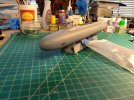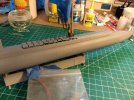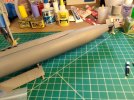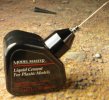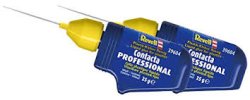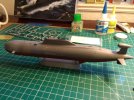I hate seams, especially the long seams like the sections of hull where no seam should be. I've watched a ton of videos on how to eliminate seams. I've tried AK grey putty, Tamiya white putty, Tamiya Liquid Surface Primer, and adding super thin cement to flush the two surfaces. Still, after I add a coat of primer, there's the seam.
With the puttys, even when I add a tiny bead with a toothpick, when I try to sand and feather it out, it doesn't help, plus it's hard on the fine details.
How many hours should I spend on a model trying to putty and sand the seams?
With the puttys, even when I add a tiny bead with a toothpick, when I try to sand and feather it out, it doesn't help, plus it's hard on the fine details.
How many hours should I spend on a model trying to putty and sand the seams?

